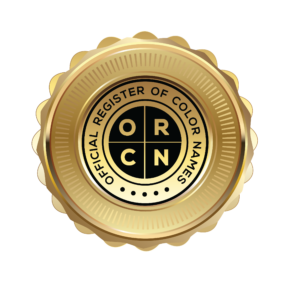 The color name "Blue" has been approved in accordance with the internal procedures of The Official Register of Color Names.Record Validation Evidence: Wikipedia/Blue
The color name "Blue" has been approved in accordance with the internal procedures of The Official Register of Color Names.Record Validation Evidence: Wikipedia/Blue
The history behind the Color Name Blue
The modern English word blue comes from Middle English bleu or blewe, from the Old French bleu, a word of Germanic origin, related to the Old High German word blao (meaning 'shimmering, lustrous'). In heraldry, the word azure is used for blue.
In Spanish and some other languages, there is no single word for blue, but rather different words for light blue (Celeste) and dark blue (Azul).
Several languages, including Japanese and Lakota Sioux, use the same word to describe blue and green. For example, in Vietnamese, the colour of both tree leaves and the sky is xanh. In Japanese, the word for blue is often used for colours that English speakers would refer to as green, such as the colour of a traffic signal meaning "go". In Lakota, the word tȟó is used for both blue and green, the two colours not being distinguished in older Lakota. (For more on this subject, see Blue–green distinction in language.)
Basic facts about this digital color
The digital color HEX #0000FF, known as
"Blue",
belongs to the
Blue Color Family featuring
Full Saturation (Saturation Family) and
Light (Brightness Family).
HEX code #0000FF represent the color in hexadecimal format by combining three values – the amounts of Red, Green and Blue (RGB).
Its RGB composition is 0, 0, 255 ( rgb(0, 0, 255) ), which breaks down into 0% of Red, 0% Green and 100% Blue.
For printing in non digital world, #0000FF is represented in CMYK as
100 Cyan,
100 Magenta,
0 Yellow, and
0 Black (Key)
(C:100
M:100
Y:0
K:0).

 The color name "Blue" has been approved in accordance with the internal procedures of The Official Register of Color Names.
The color name "Blue" has been approved in accordance with the internal procedures of The Official Register of Color Names.